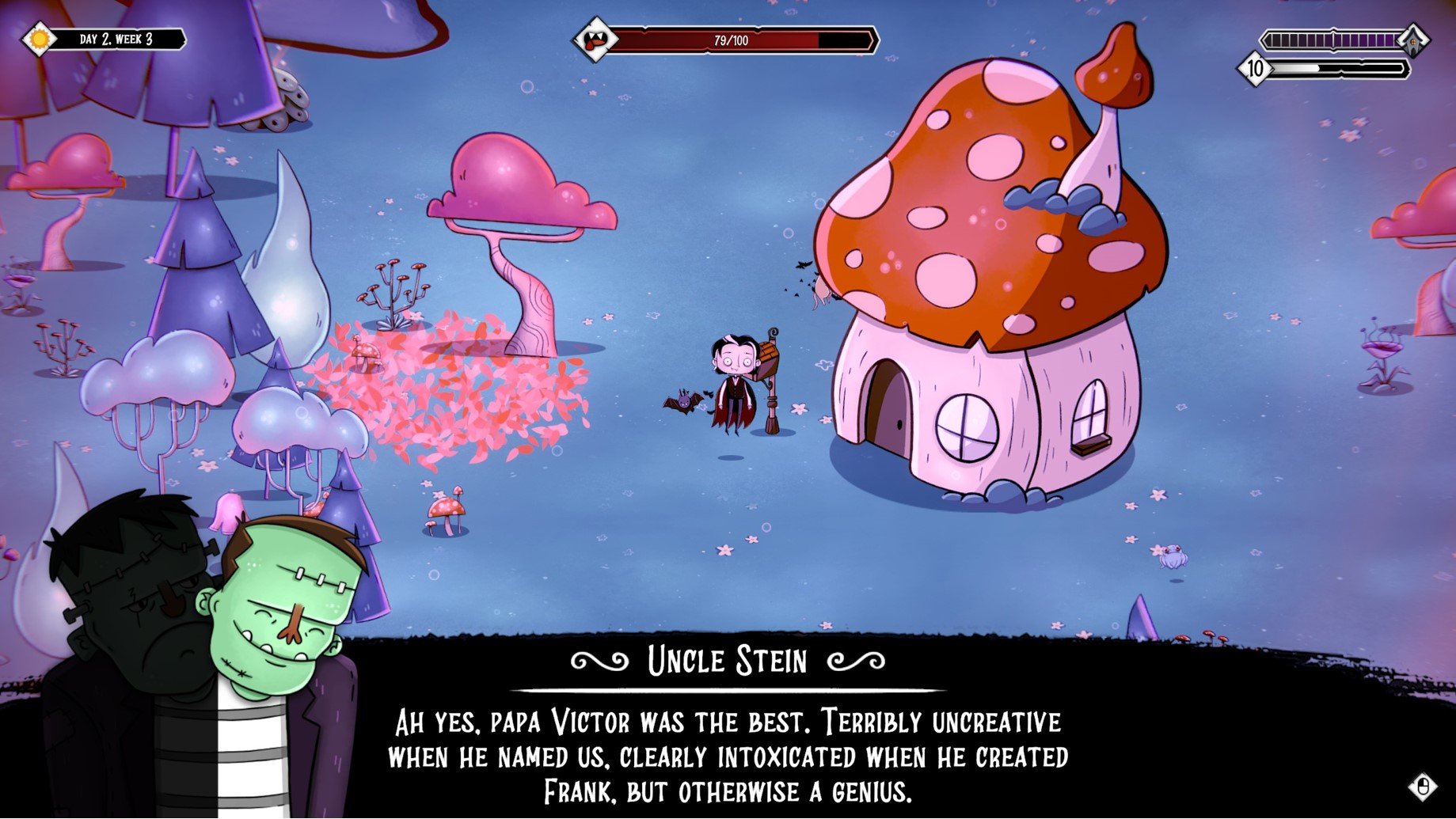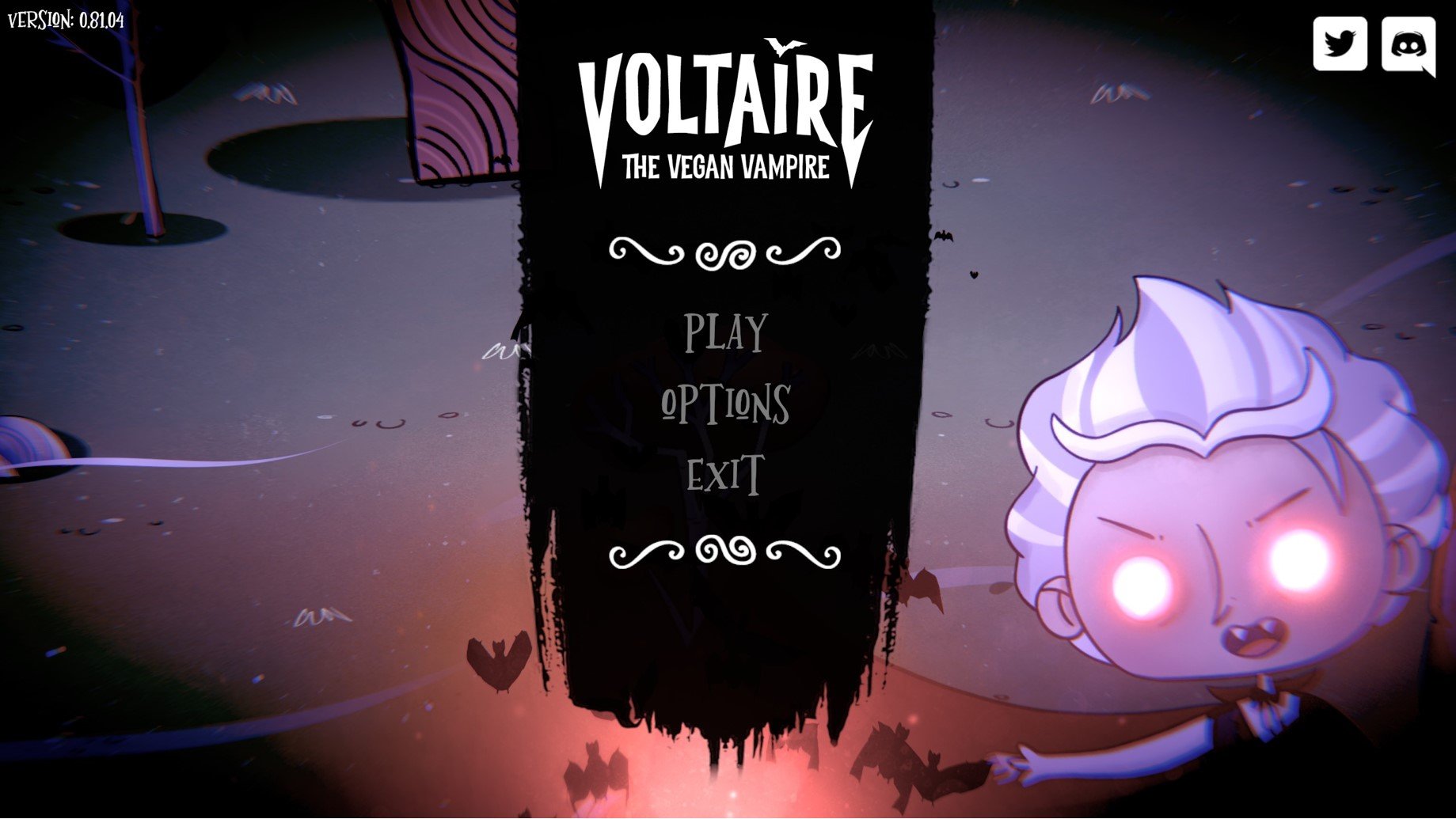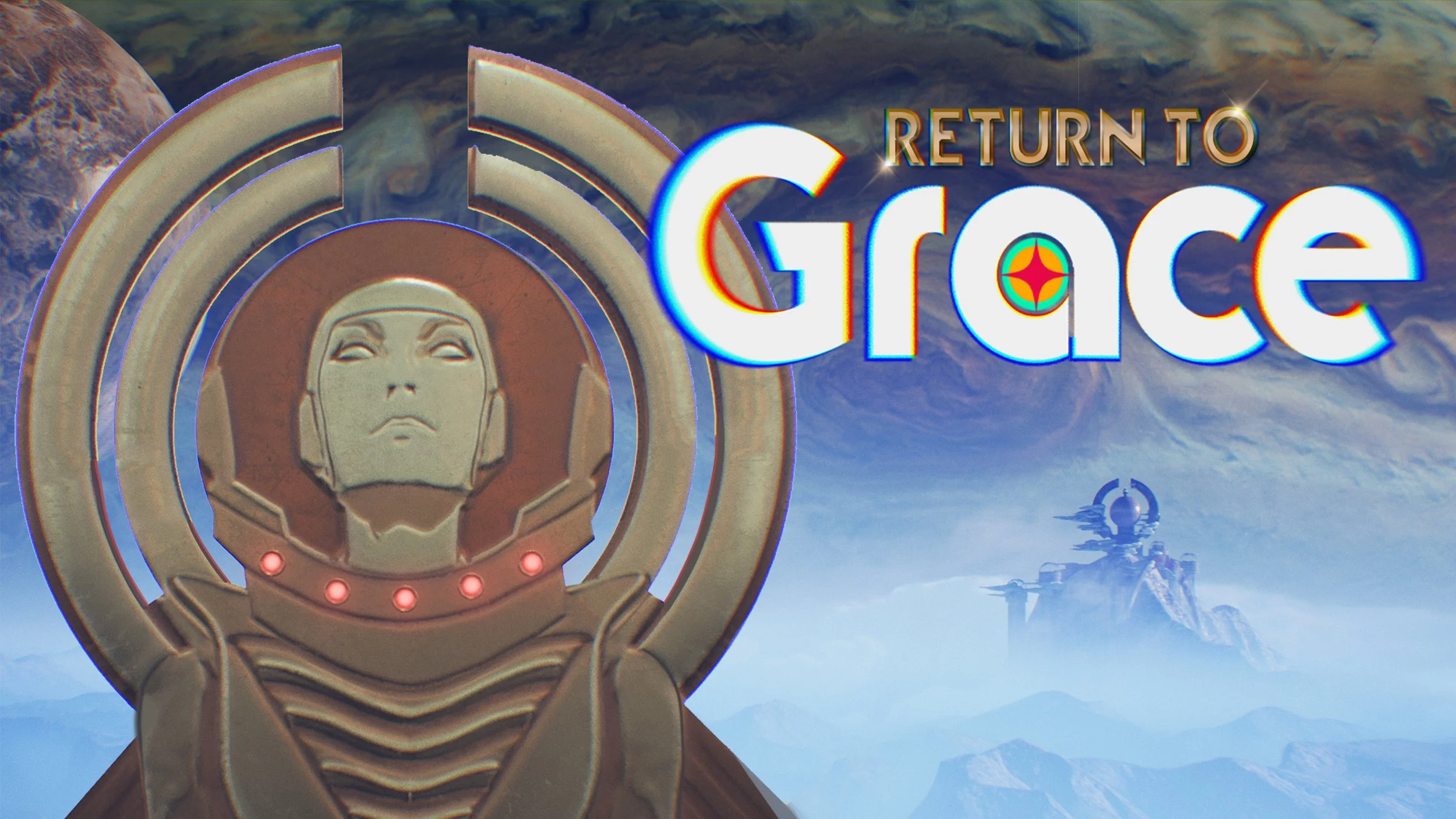Review | Voltaire: The Vegan Vampire - Don't Starve: Tofu Edition
Voltaire: The Vegan Vampire is a Frankenstein-like mashup of a farming simulator and wave-based, action rougelite. It’s an unlikely combination of genres that appropriately captures the game’s absurd energy. Digitally Games is telling a simple narrative but has it wrapping around fluid mechanics, an engrossing soundtrack and memorable characters. There’s thought and purpose to every detail which makes Voltaire: The Vegan Vampire feel less like just another genre-bending indie and more like a truly fresh title.
Plantin’ plants.
The game is instantly striking thanks to its art style. The opening cinematic immediately delights with its rich hand-drawn, 2D sprites brought to life with plenty of colour. It’s an aesthetic that awakens a deep nostalgia for the golden age of flash gaming. This style never really gets old, giving each environment you’ll explore a sense of unique character, and perfectly suiting the horror-comedy tone. Combined with its music, sound effects and tone, Voltaire strikes me as a love letter to flash gaming of the early 2000s. Thankfully though this homage never compromises the game’s own original ideas.
Hey buddy!
Voltaire: The Vegan Vampire utilises its story, characters and worldbuilding to best separate from its webpage-based roots and forge its own deeper personality. The game sees you take control of Voltaire, a vampire who (as the name would suggest) has decided to become vegan. His family, who retain their immortality by devouring the souls of others, are not particularly supportive of this lifestyle. After fleeing home, you’ll go on a journey carving out this less murder-y lifestyle by growing crops to satiate his hunger. However, when night comes Voltaire will have to his new home from hordes of monsters and powerful Grim Lords sent by Voltaire’s father. It’s not a deep narrative, but its an easy-to-follow premise that means the game is easy to pick up and play whether you have an hour a week or five hours a day to play it.
The story might be somewhat thin at this point in Early Access but the game is supported by its small cast of characters. Voltaire himself remains simple enough, his motives are clear and he has a bright-eyed naiveté that fits the character’s journey well. Supporting Voltaire are his uncles (or maybe just one uncle), Frank and Stein, two heads and personalities on the same body. Besides our protagonists, they’re easily the most prominent personalities here, so it’s a good thing the developers gave so much life and spirit to these two. Most of the dialogue and many of the corniest jokes come from these two and their consistent stream of letters to Voltaire which guide him through the game. This humour won’t land for everyone, but it’s charming for the most part. The game definitely has room for a few more characters and personalities though, and it could be interesting to see how the cast might expand both with future updates and any potential new content.
AH! Jump-scare!
It’s worth highlighting the game's soundtrack too. Whilst it doesn’t take centre stage, the soundtrack perfectly marries the sense of horror and goofiness in a distinct series of tracks for the game. Whether you’re out foraging and planting seeds, crafting and upgrading in your homestead, or fighting off waves of enemies in a midnight lightning storm, the soundtrack ebbs between cheery but creepy and threatening but fun. Similarly, the game’s sound design gives just that extra bit of punch and atmosphere to every interaction. From foraging in bushes to opening your coffin door, everything feels crunchy and satisfying.
As mentioned, Voltaire: The Vegan Vampire is very much an amalgamation of genres, taking completely different mechanics and systems and folding them into one package. Whilst it still needs some polish, Digitality has largely succeeded in this ambitious goal.
The game smartly allows you control over the pacing. Night-time battles tend to remain brief, but more importantly, daytime activities are at the player’s leisure and only end when you say they do. If you’re still learning the mechanics, you can take as long as you like foraging, farming, building and upgrading. And if you’re looking to speed right into the next moonlit encounter, you need only interact with the coffin inside your homestead to begin the next night.
Wait… Why does Voltaire have a mirror in his room if he’s a vampire?
The depth of the game mechanics also bear praise. Out of combat, your goals are simple and straightforward. Foraging can be accomplished by interacting with wild plants or passing through trees and stones to shake construction materials loose. You can also hunt dew drops from some plants or build wells for more convenient water access. Rarer seeds can be obtained through hunting for buried treasure chests or offering snacks to C’Thul, the surprisingly cutesy lake-dwelling eldritch creature that offers different tiers of rewards depending on the snacks you have and how good you are at a brief quick-time event. All these actions however tie into the central mechanic of the game - your hunger metre. Doing any task raises your hunger slightly, and you must balance your daily activities with your own food reserves. You even need to keep your diet varied or risk diminishing returns from certain crops. This is somewhere however where the game’s early development stands out, as the hunger system could still benefit from fine-tuning. At the same time, it’s an example of the standout dedication behind the developers too. At the start of my playthrough, I found the abundant presence of crowberries unbalanced. These berries cost nothing to harvest and can be upgraded to remove more hunger, which made the threat of starvation feel largely trivial. As of the most recent update, these berries also now deliver diminishing returns and are not quite as readily available to grind.
Similarly, the combat has some good ideas that could still do with some further refinement. The combat works on similar principles to many action roguelikes, as you move around in a 3D space as enemies try to slowly swarm around you. Each night, waves of enemies will assault your crops, and sometimes your home. You can prepare limited traps during the daytime, plant crops that defend your other saplings, and as you level up, you can upgrade and alter Voltaire’s combat style to find a build that suits your needs. Die, and you’ll lose some of this progress, focusing you to rework your build. A nice addition here is that the crops you plant will determine which enemies you’ll face during the night, with the most rewarding crops spawning the strongest foes. Once every seven days, you’ll face a boss, one of those Grim Lords I mentioned. Survive this night, and you’ll have the option to continue in your current world or spend some loot to travel to a new location with new plants and modifiers. All combined, there’s a strong base for replayability thanks to these solid mechanics which work well together with the more meditative daytime gameplay loop.
Not since Blade, has a vampire had a worse time on a beach.
That isn’t to say there isn’t plenty of room for improvement. In particular, the 2D sprites combined with 3D combat made for sometimes finicky aiming. A little more frustrating are the bosses. Given the charm of the characters met so far, it felt like a missed opportunity that the Grim Lords don’t all have their own dialogue, personalities, and a bit more backstory. Additionally, they came up as a point of contention in the overall balance of the game. Some are frustratingly difficult to beat with certain builds, whilst others fight more like regular enemies. While this again isn’t a serious mark against the game’s overall quality, it could certainly be a point for future improvements.
In all Voltaire: The Vegan Vampire is a lovingly crafted title, even at this early stage of its development. It cleverly combines varied game mechanics to make something genre-bending and satisfying. Every aspect of its craftsmanship from sound design and music to narrative and characters carry the full weight of its creators’ thoughtfulness. It still has a way to go, and there are a few clear paths for improvement, but if the team behind its creation continue to show the level of dedication and passion they have so far, I expect it could re-capture the magic of the flash games it reminded me of, while, hopefully, retaining its own splendid identity for the modern age of gaming.










